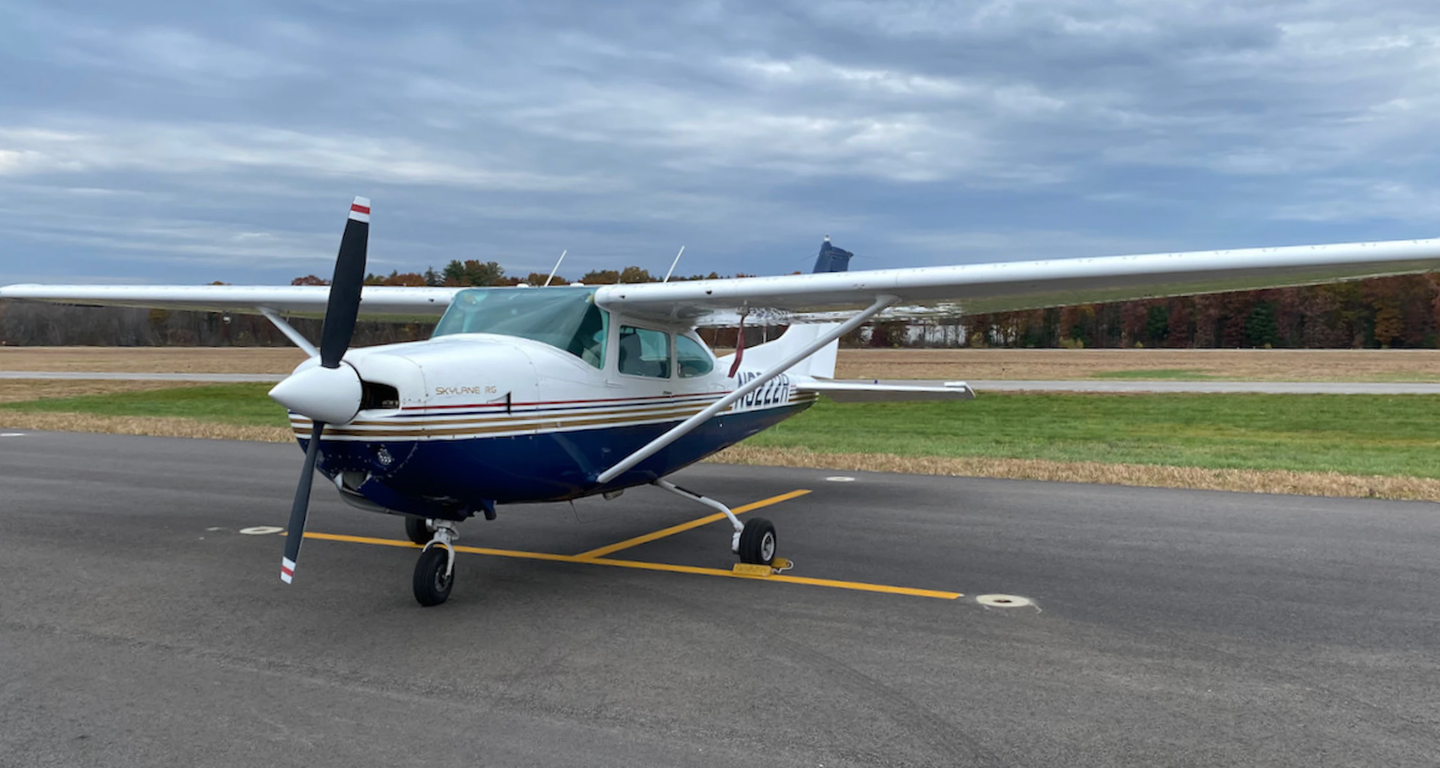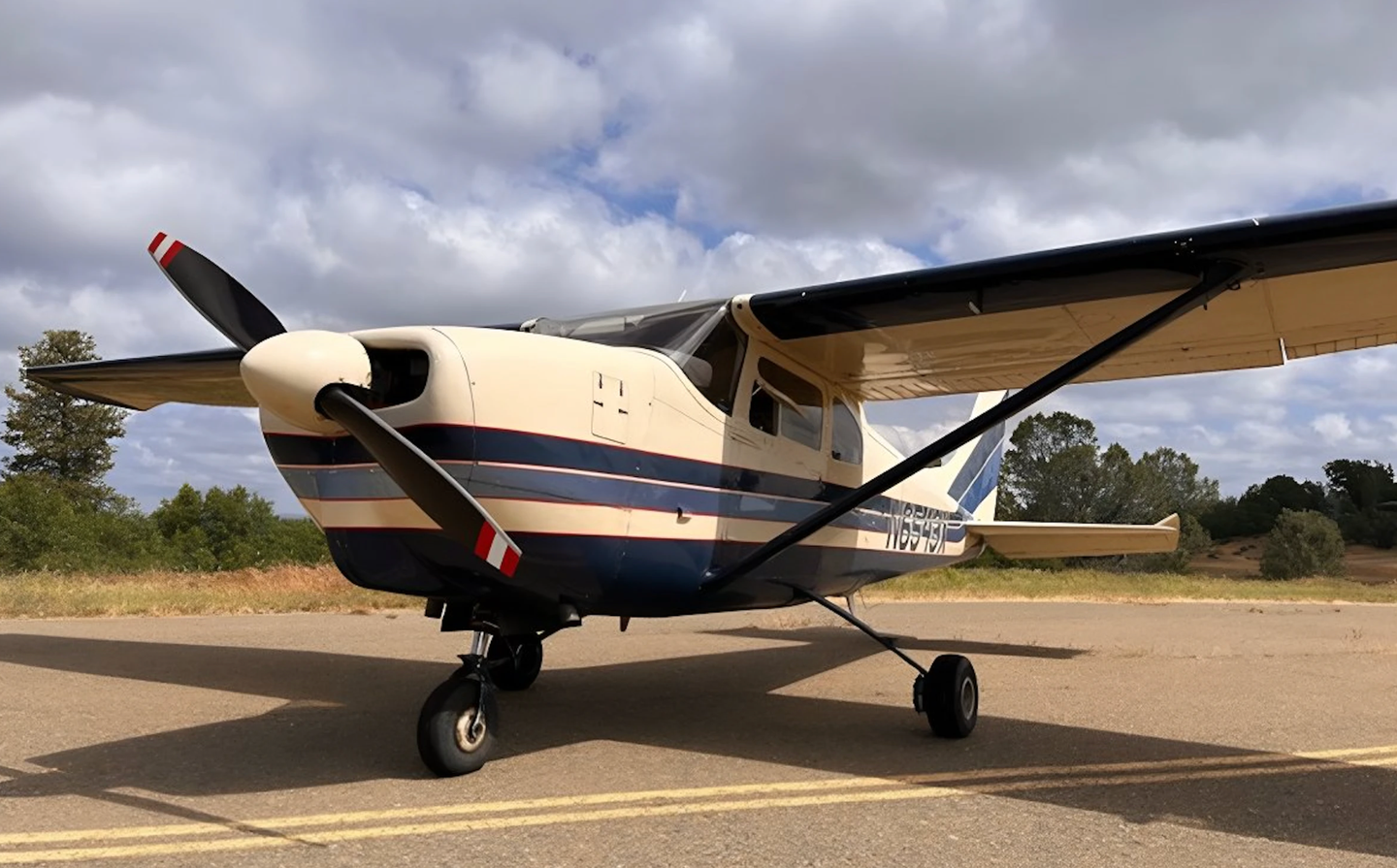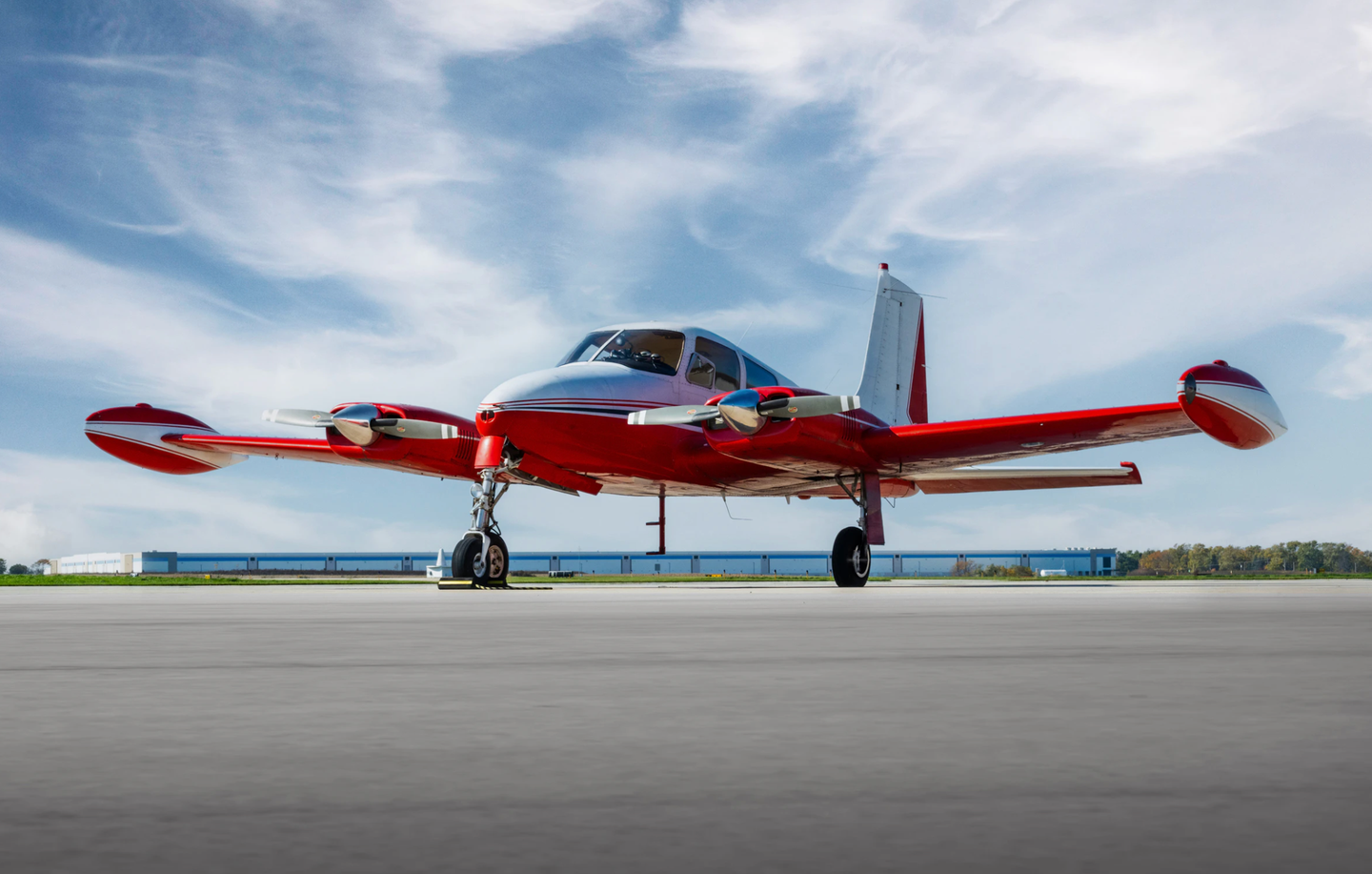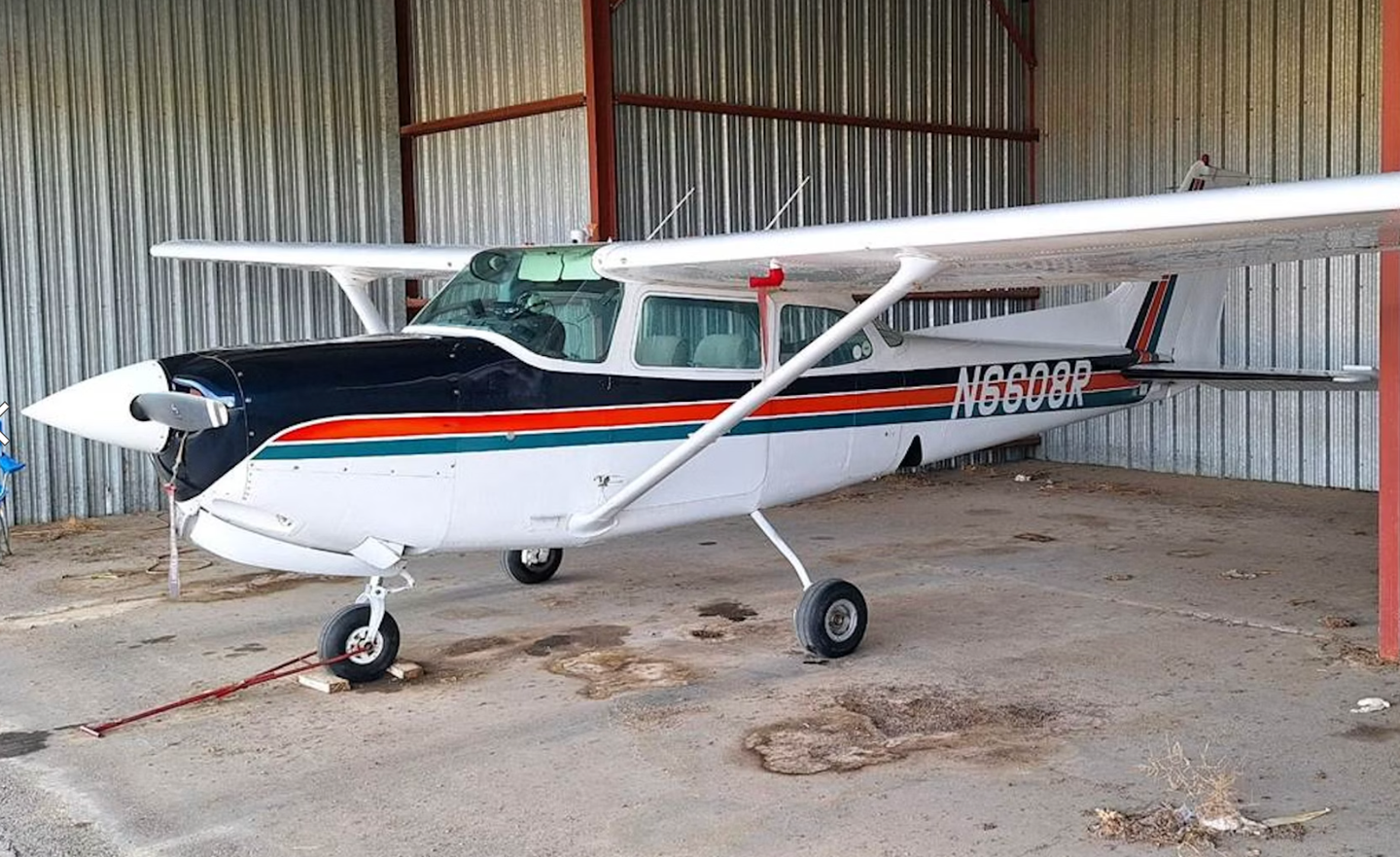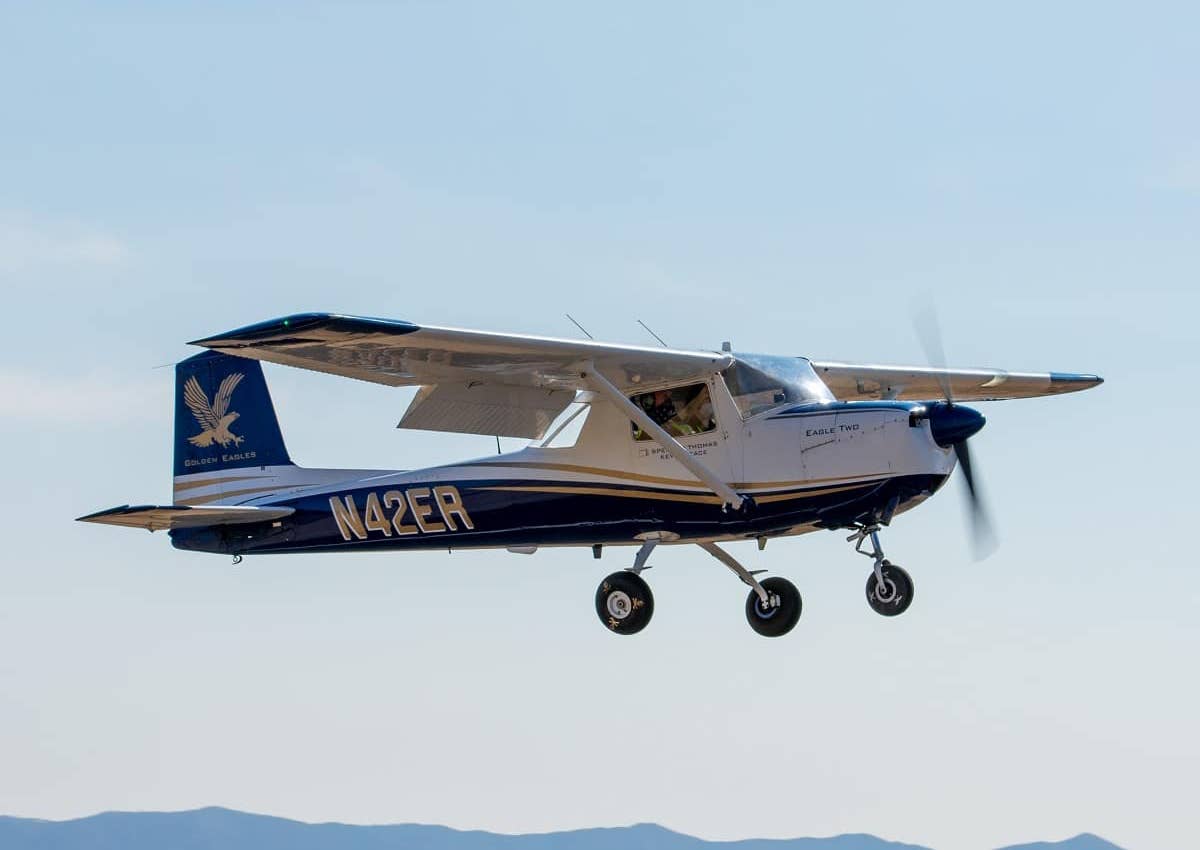Fixed-Gear Speed Demon
We fly the latest turbocharged Corvalis two years after Cessna bought the Columbia line of composite singles
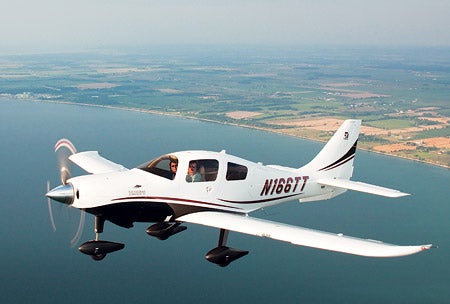 |
If you fly most of your flights on the West Coast or rely on your airplane for on-demand business or personal travel to virtually any destination, turbocharging is more than a convenience. I'm a perfect example of the practical application of turbocharging. Three of the six airplanes I've owned over the last 40 years have been turbocharged, and there's no comparison between the places I've gone with and without turbocharging.
These days, I fly a normally aspirated Mooney that used to fly behind an aftermarket Rajay turbo. (It's a long story, not worth telling.) Last August, Pilot Peggy and I wanted to take another couple flying and considered our options. Santa Barbara was a good possibility, San Diego another reasonable destination---both on the coast.
Unfortunately, Big Bear wasn't so reasonable. Big Bear is a mountain strip 6,750 feet up in the San Bernardino Mountains and the most spectacular choice. Density altitude at Big Bear on a typical summer day can reach 8,500 feet, a height at which the family Mooney would be down to about 70% power. The runway at Big Bear is long and usually departs over a lake, but I wouldn't even consider flying out of that airport with a gross load on a typically warm, 75-degree F summer day.
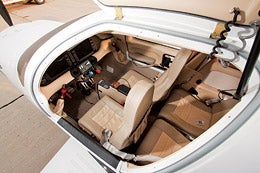 The Corvalis models feature gull-wing doors and side-stick controls. The spacious cockpit measures 49x49 inches, and its plush seats are reminiscent of a luxury sports car. |
A turbo reduces the risk in such situations. The case for turbos is easy to make for those pilots with a legitimate use for a blower, and even for those who want one simply for the extra margin of safety, regardless of any real performance justification. That's one reason so many manufacturers offer both a normally aspirated and a turbocharged version of the same airplane.
From Columbia To Cessna
So it is with Cessna's Corvalis. Under the Columbia banner, the models were known as the Columbia 350 (normally aspirated) and 400 (turbocharged), and Cessna's renamed versions are the Corvalis and Corvalis TT, respectively. ("TT" stands for twin-turbocharged.) From the outset, Lance Neibauer's Columbia airplanes seemed an unusual choice for stablemates to Cessna's all-aluminum, high-wing singles. When the giant Wichita company purchased little Columbia Aircraft in 2007, the new Cessna products presented an interesting contrast to the time-honored designs Cessna has become famous for in the last half century.
If Cessna has been criticized for its lack of innovation, the Columbia 350 and 400 presented the company in a very different light. The new airplanes were a flash of innovation, as modern as the new millennium and possessed of performance that matched their modern appearance. The Columbias were part of the new age of light aircraft. Like Cirrus and Diamond, Columbia found new ways to smooth more and more rough edges off what had come to be regarded as the conventional airplane.
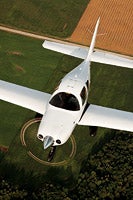 |
A Different Kind Of Cessna
Despite the enduring attraction of Cessna's traditional piston models (or perhaps because of it), the Corvalis aircraft present a prospective Cessna buyer with a number of choices, none of which were available before. For those who embrace newer construction techniques, the Corvalis offers E-glass, carbon-fiber technology to assure some of the smoothest airfoils in general aviation. Composite construction also produces a lighter, stronger airframe, as evidenced by the Corvalis' certification in the FAA's Utility category that raises positive G-limits from 3.8 to 4.4.
Corvalis models also feature gull-wing doors and side sticks, two innovations relatively new to the industry. The gull-wing doors open up and out to provide optimum access to the cabin. Cessna provides leather straps to help you pull the doors back down into position when it's time to close up. Taxiing with the doors up is pretty much de rigueur if you opt out of air-conditioning. Air-conditioning was optional until last year, when Cessna made it standard with the option to remove for those wishing to improve useful load. Just remember to keep a tight grip on the straps if there's any significant wind. Some pilots simply loop the strap around their outboard lower arm to hold the door in trail position.
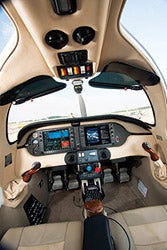 The Garmin G1000 system that's standard on the Corvalis TT features WAAS and Synthetic Vision. The panel also has a Garmin GFC 700 autopilot. |
Side sticks, as the name implies, are mounted on the sidewalls, so there's nothing to obstruct the view of instruments and controls. Side sticks do manifest one characteristic that takes a little getting used to. Roll response with the short throw of the side sticks is heavier than you may be used to. That's because there's less mechanical advantage than with a conventional joystick or yoke.
Similarly, you can't simply rest your forearm on the left armrest and fly the airplane with a flick of the wrist. Control forces are heavier than with a Skyhawk or Skylane, but once you get accustomed to manipulating the angled stick, it becomes almost second nature. Just don't try to fly with your right hand unless you're in the right seat. Some pilots may actually prefer flying from the right side to observe the fighter pilot's principle of HOTAS, hands on throttle and stick.
This allows you to maneuver the airplane with your right hand and manage power with your left, fighter-pilot style. No one will ever mistake a Corvalis for an F-16, but the side sticks do lend themselves to dreams of flying a fighter. Side sticks also give the front office an open, airy feeling, making the cockpit seem larger than it is.
Navajo Cabin---In A Single
!And it's already fairly large. Aviators riding in the front buckets luxuriate in a cockpit that's 49 inches across by an equal measure tall. Those are roughly the same dimensions as a Piper Navajo. In combination with an interior so lush and comfortable that the whole airplane feels packed in ermine, the Corvalis models offer luxury seating that's nearly automotive in nature.
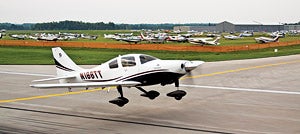 A Continental TSIO-550C engine provides 310 horsepower on takeoff. |
Finally, like all the Cessna singles, the standard and turbocharged Corvalis fly behind Garmin G1000 avionics, systems that have become so entrenched in aviation that we sometimes forget how innovative they are. For 2010, WAAS is standard, along with Garmin GFC 700 autopilot and Synthetic Vision. Until I flew with Synthetic Vision, I regarded it as more of a frill than a functional advantage. After one flight, however, I was sold (at least, I would be if I were buying a Corvalis).
The Benefits Of Power
Both the Corvalis models are powered by essentially the same 550-cubic-inch Continental engine, and both are capable of generating 310 hp at sea level. With the benefit of twin turbochargers, however, the turbocharged TSIO-550C can maintain that power rating as high as 21,000 feet. That means the Corvalis TT can still produce its full 85 percent power at 25,000 feet.
Fortunately, the TT is a master at upward mobility. At 3,600 pounds gross with 310 horses out front, the Corvalis scrambles for altitude, scoring 1,400 fpm climb from sea level. Better still, the airplane holds on to good vertical velocity up high, an important factor for airplanes that must match the mountains. Try Leadville, Colo., elevation 9,927 feet, in the summertime in a normally aspirated airplane (or better still, don't) and you'll gain a full appreciation of the benefits of turbocharging.
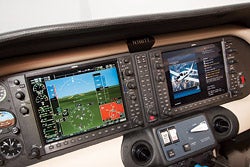 |
Cruise With Fixed Gear
The exact cruise speed of the Corvalis TT has been the subject of some debate. A few years ago, the original Columbia Aircraft went head-to-head with Mooney on which manufacturer had the fastest piston single. Mooney took the competition seriously enough to commission the LoPresti family to help them reduce drag and improve speed on the turbocharged Acclaim S.
There's no longer much debate over which airplane is faster (it's the Mooney), but there's little question the Corvalis TT is the world's fastest, FIXED-GEAR, piston-powered, production aircraft. Technically, the TT's spec is 235 knots, but that's on a flight-test airplane with no antennas, no boarding step, no TKS or air conditioning---in other words, an airplane with virtually nothing hanging out to grab the wind. Lancair COO Tom Bowen was VP of engineering at Columbia for several years, and he once told me he had seen 237 knots on a pure flight-test airplane.
You're not likely to see cruise that fast in a typically equipped airplane, replete with a full raft of antennas and all the options that most pilots buy. Typically equipped airplanes that include most of the options above can score more like 225 knots at max cruise on a good day with all the pilot's biorhythms on a high. I've taken two Columbia 400/Corvalis TT's to FL250 for cruise checks, both times with a company pilot setting power and mixture, and I saw 222 knots and 228 knots, respectively, pretty impressive for an airplane with gear permanently down and laminated.
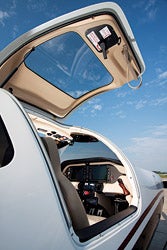 |
The price you pay for such brevity is big fuel burn, and for that reason, most pilots don't run the airplane that hard or that high. The Corvalis carries 102 gallons of 100LL, so even at 20 gph, you can plan on 4.2 hours plus reserve. Even at 200 knots, a reasonable cruise at the highest breathable altitude, the airplane offers well over an 800 nm range. Since four hours is about as long as most folks are willing to sit in any airplane, that's probably reasonable range and endur-ance. Those pilots who reduce power to long-range cruise can see more like a 1,200 nm range, but with only a 450-pound payload.
Turbo Payload
In other words, not all those seats are usable with full fuel in the tanks unless some of the people are miniatures. The TT enjoys 200 pounds more gross than the standard Corvalis, but that's apparently not enough to offset the weight of turbocharging, oxygen and the associated plumbing. The TT's empty weight is almost exactly 100 pounds higher than that of the normally aspirated Corvalis. Gross weight is 3,600 pounds, and Cessna lists the airplane's empty weight at 2,550 pounds, so useful load is a theoretical 1,050 pounds.
In fairness, the TT's payload numbers are no worse than those of the competition, and as advertised, speed is better than anything else among fixed-gear singles.
Those who do fly in a Corvalis enjoy a cabin that's comfortable and quiet, and the ride is among the best in the class. Wing loading is a high 25.5 pounds per square foot, one of the most meaningful measures of an airplane's ability to plow through turbulence with minimum disturbance.
No matter how much talent and innovation the Corvalis incorporates between its 36-foot wingspan, the airplane is fighting a market headwind. Like virtually everyone else in general aviation, Cessna's Corvalis sales are suffering from the current recession. In 2008, Cessna sold 110 turbos and 14 normals. Last year, the numbers were more like 41 turbos and five normals, suggesting a strong preference for the blown model.
Cessna moved Corvalis production out of Bend, Ore., to Mexico and to Independence, Kans., at the end of last year, so production numbers in 2010 probably won't be indicative of the model's sales potential.
As the first, new, certified, piston Cessnas since the model 303 Crusader, the Corvalis and TT very well may be the Next-Generation Piston airplanes Cessna has been seeking for so long.

Subscribe to Our Newsletter
Get the latest Plane & Pilot Magazine stories delivered directly to your inbox


